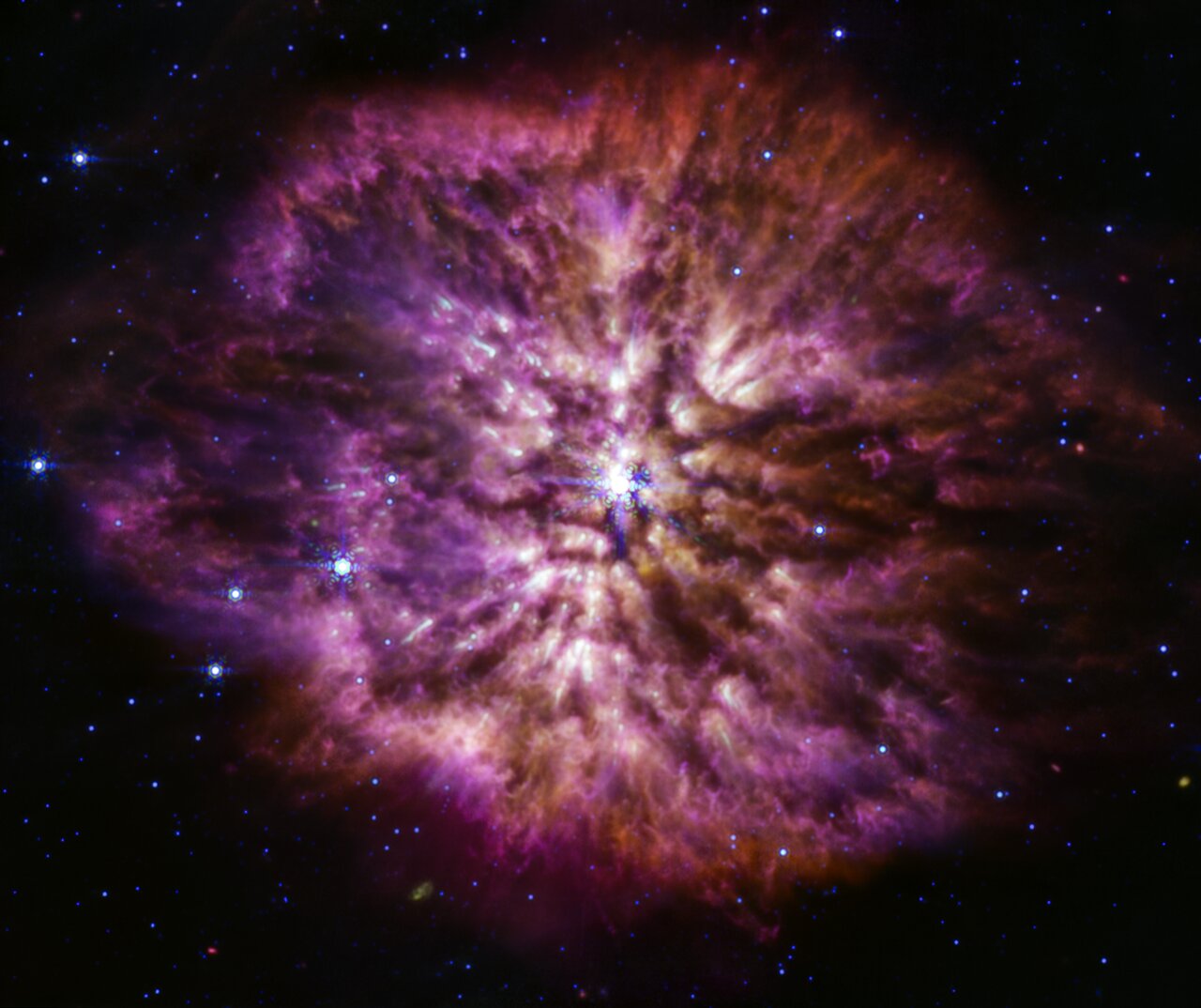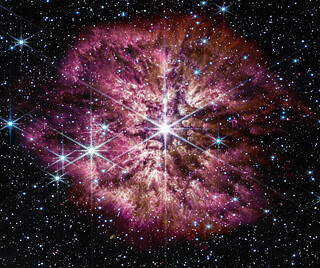Webb’s instruments feature Wolf-Rayet 124 (Slider Tool)
A Wolf-Rayet star is a rare prelude to the famous final act of a massive star: the supernova. As one of its first observations in 2022, the NASA/ESA/CSA James Webb Space Telescope captured the Wolf-Rayet star WR 124 in unprecedented detail. A distinctive halo of gas and dust frames the star and glows in the infrared light detected by Webb, displaying knotty structure and a history of episodic ejections. Despite being the scene of an impending stellar ‘death’, astronomers also look to Wolf-Rayet stars for insights into new beginnings. Cosmic dust is forming in the turbulent nebulas surrounding these types of stars, dust that is composed of the heavy-element building blocks of the modern Universe, including life on Earth.
The image on the left is a composite image combining near-infrared and mid-infrared wavelengths of light. The star displays the characteristic diffraction spikes of Webb’s Near-infrared Camera (NIRCam), caused by the physical structure of the telescope itself. NIRCam effectively balances the brightness of the star with the fainter gas and dust surrounding it, while Webb’s Mid-Infrared Instrument (MIRI) reveals the nebula’s structure.
The image on the right showcases the object as seen by Webb’s Mid-Infrared Instrument (MIRI). Cooler cosmic dust glows at the longer mid-infrared wavelengths, displaying the structure of WR 124’s nebula. The 10 light-years-wide nebula is made of material cast off from the ageing star in random ejections, and from dust produced in the ensuing turbulence. This brilliant stage of mass loss precedes the star’s eventual supernova, when nuclear fusion in its core stops and the pressure of gravity causes it to collapse in on itself, and then explode. As MIRI demonstrates here, Webb will help astronomers to explore questions that were previously only available to theory, questions like how much dust stars like this create before exploding in a supernova, and how much of that dust is large enough to survive the blast and go on to serve as a building block of future stars and planets.
Credit:NASA, ESA, CSA, STScI, Webb ERO Production Team
About the Images
| Id: | weic2307a | |
|---|---|---|
| Release date: | 14 March 2023, 19:00 | |
| Related releases: | weic2307 | |





